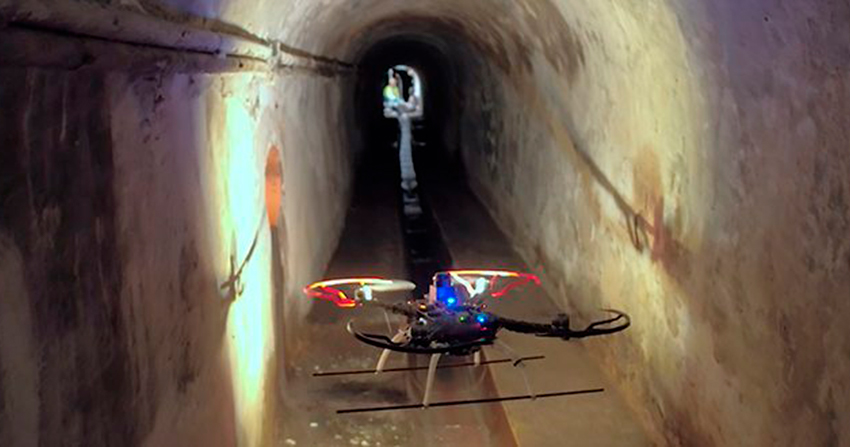The ARSI project develops an autonomous Micro Air Vehicle (MAV) that allows brigades to carry out sewer inspections in a faster, safer and more efficient way. In this way, damagers and dangers that sewers can suppose, are avoid.
However, sewer inspections are a notoriously difficult, time consuming and hazardous task. Inspection brigades work in darkness and high humidity, rigorously surveying the vast networks of narrow tunnels where low ceilings often cause posture-related injuries, potentially in the presence of toxic or explosive gases.
In order to improve the working conditions of the sewer inspectors, avoid any work-related injuries or health problems and increase the efficiency and precision of such inspections, the European Coordination Hub for Open Robotics Development (ECHORD), in collaboration with the City of Barcelona, has developed a robotic system that would allow inspection brigades to carry out sewer inspections in a safer and more efficient way.
MAVs have many advantages: they are light and compact; easy to transport and deploy without extra equipment; and they can navigate quickly in sewer tunnels, regardless of obstructions or obstacles on the ground ― the area most likely to be damaged by the flow of sewage water. Crucially, a MAV allows brigades to carry out inspections efficiently from the surface, safe from the hazards of the sewers.
With its overlapping propellers, the innovative MAV design delivers power while retaining a compact form factor, allowing it to fly for over 15 minutes in all tunnels at least 80cm wide, carrying up to 1kg of sensor payload. Once deployed through a standard manhole, our MAV autonomously executes inspection plans determined in advance, navigating safely around corners, deciding where to go at intersections, and avoiding obstacles such as unexpected service pipes crossing tunnels.
During every flight, various onboard sensors collect high-resolution video and depth data, while providing live video feedback over a wireless link to the operators on the surface. All the information collected onboard the MAV is then post-processed using the ARSI software suite to generate high-resolution 3D models of the sewer tunnels, in order to establish whether the inspected sections are operative and to automatically flag possible obstructions or structural defects. The intuitive user interface references all data and possible structural defects against maps or GIS information provided by the clients, allowing inspection professionals to efficiently review all the information and generate accurate reports of the state of the sewers.
Following the Challenge Brief developed by the City of Barcelona, ARSI project has been developed by Eurecat, together with FCC, Simtech Design and IBAK.
Key features
- 15+ minutes flight autonomy
- 1kg payload capacity
- 3kg total weight
- Dust and splash resistant
- Live video feedback

General information
Project
ARSI – Aerial Robot for Sewer Inspection
Programme and call for tender
ARSI project is part of ECHORD++, the European Coordination Hub for Open Robotics Development, which has received funding from the European Union’s Seventh Framework Programme for research and development of robotics technology for real use-cases.








